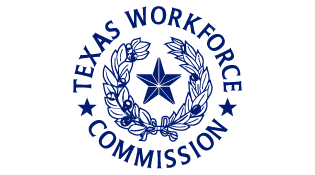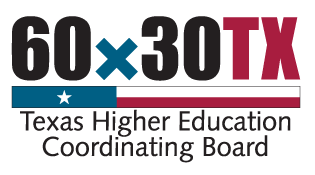Many of our students have special advising needs. Sometimes these needs are unique or rare. Sometimes they present barriers to educational achievement. Perhaps you have a student who has moved around a lot due to migrant work or a connection to the military. Maybe one of your students is eligible for an athletic scholarship and it’s been a while since you advised a student-athlete. You likely have students with disabilities, who are experiencing homelessness, who are in foster care, or who are undocumented.
We know you strive to give these students the best possible care and attention. We’re here to enable you to do just that when it comes to their college and career advising. Our focus is to ensure these students can plan for the training and career option that best fits them. We also want to help your schools and districts support these students to meet or exceed college and career readiness benchmarks.
In this article, we’ll cover the following topics:
- Undocumented students
- Highly mobile students
- Migrant students
- Military-connected students
- Student-athletes
- Students with disabilities
You’ll find more information and resources for most of these topics in the Texas OnCourse Academy. Don’t miss our modules on Advising Highly Mobile Students, Transition Services for Students with Disabilities, and the TASFA.
Undocumented Students
Many high school students who are undocumented have reservations about going to college. In particular, they may have questions about paying for college. But don’t let these students give up on their college dreams! Texas and at least 20 other states provide financial aid and in-state tuition to help them access higher education.
In Texas, undocumented students may apply for state aid by completing the TASFA – the Texas Application for State Financial Aid. This application is an alternative to the Free Application for Federal Student Aid (FAFSA), which is for US citizens, permanent residents, and certain visa holders. But to qualify for state aid through the TASFA, students must meet certain residency requirements:
- They graduated or will graduate from a Texas public or private high school or received the equivalent of a high school diploma in Texas.
- They resided in Texas for 36 months (3 years) leading up to their high school graduation or receipt of an equivalent high school diploma.
- They have resided or will have resided in Texas for the 12 months prior to the census date of the semester in which the student will enroll in the college.
- They sign and file an Affidavit of Intent to Become a Permanent Resident to their college as soon as possible after they’ve been accepted.
We’ve summarized the TASFA residency requirements in an infographic you can print out and share. Here are other important things to know about the TASFA:
- A student’s parents’ status does not play a role in eligibility to claim access to state financial aid.
- Male students have to register with the Selective Service to be eligible to receive state financial aid. They can do so once they reach 17 years and 3 months.
- Some colleges and universities prefer that applicants who are undocumented fill out a print version of the FAFSA rather than the TASFA. Be sure the student you’re advising checks with the school they’re looking to attend.
For more information on the TASFA, check out the TASFA module in the Texas OnCourse Academy. And don't miss our page on the basics of financial aid.
Highly Mobile Students
The definition of highly mobile is any student who changes schools several times during their K–12 career. No matter the reason for each move, school counselors and advisers play an important role in smoothing the transition after each move. They also monitor academic risk factors.
There are many reasons why a family would move frequently. Moves can be job related. A family may move because one or more members is in the military, works in the Foreign Service, or works for a corporation abroad. One or more family members may be a migrant or seasonal worker.
Students may also be highly mobile because they or their family is experiencing homelessness. They may be in the foster care system. Or they may have an incarcerated parent and need to live with another family member temporarily. Divorce can also lead to a student’s becoming highly mobile.
Frequent school changes can be disruptive. What’s more, poverty, domestic violence, mental illness, and substance abuse can all cause high mobility. These factors may also make students vulnerable to adverse outcomes such as poverty, hunger, and health problems.
Students experiencing transition may react in various ways. For students who undergo many moves, each experience and reaction is different. School counselors and advisers should tend to three basic student needs, especially for students experiencing transition. Those needs are social-emotional, academic, and physiological (related to a student’s general well-being).
There are lots of different ways to address these needs and create a smoother transition. For example, school counselors and advisers can prepare lists of resources available in the community. Having basic supplies and food available to families is another way that a school counselor or adviser can show students that they are welcome in the district.
For other examples of ways educators can address the unique needs of highly mobile students, check out the module Advising Highly Mobile Students in the Texas OnCourse Academy. We especially encourage you to review the page on Resources for Highly Mobile Students, which is full of helpful links for many different categories of highly mobile students. Find this page in unit 1 of the module, under Programs and Resources That Assist with Transition.
Below, we will address two specific communities of highly mobile students: migrant students and military-connected students.
Migrant Students
Migrant students are children and youth whose families work in agriculture or in fishing. Agricultural workers often move across the country or from one country to another, following growing and harvesting seasons.
Along with experiencing high mobility, students who migrate might withdraw early from school and enroll late in the fall due to seasonal work their families follow. Often, the children of migrant or seasonal farm workers speak little to no English upon arrival in school. These students may also face poverty and other challenges.
Here are some resources that will help you advise your migrant student population:
The US Department of Education, through the Office of Elementary and Secondary Education, hosts programs to support the children of migrant workers through various phases of their academic careers. Additionally, organizations can access grants for supporting early childhood development, literacy, and creating equal opportunities for children of migrant workers.
Migrant students often lose time in school or fall out of sync with their classmates, resulting in their dropping out of school. The High School Equivalency Program (HEP) provides a way for students to earn the equivalent to a high school diploma. The program also provides support and guidance for subsequent employment or enrollment in an institution of higher education. Learn more about HEP in your area by visiting TEA’s High School Equivalency Program Locations website.
The Texas Education Agency Resources for Migrant Education page provides links for resources related to service delivery, needs assessment, and other state migrant projects.
Flexibility and advocacy can also go a long way in helping migrant students graduate on time. Modifying assignments or extending deadlines are a couple of ways to offer flexibility. Migrant students and their families may also be unaware of services that could support them. Refer them to local programs, appropriate staff, and community-based organizations. Help staff and teachers at your school understand the concerns migrant students face.
For more on putting these principles into practice, visit this post on advising migrant students from Cynthia Iris Gonzalez, migrant student counselor at Mission High School in Mission CISD.
Military-Connected Students
Did you know Texas is among the top three states serving military-connected children? But the relative number of military-connected children compared to the total population is small. As a result, military-connected students may go unnoticed except in schools near major active-duty installations. Students connected to the National Guard and Reserve may be nearly invisible because they are so widely distributed.
Military personnel are issued Permanent Change of Station (PCS) orders about every three years. This causes children in military families to move six to nine times while they are in K–12 schools. Sometimes, moves happen more frequently due to job-related training, deployments, and special assignments. When a parent or guardian becomes ill or injured due to military service, moves may be numerous and unexpected.
Here are some resources that will help you advise your military-connected student population:
The Military Child Education Coalition® (MCEC®) Student 2 Student® (S2STM) program trains civilian and military-connected students to establish and sustain peer-based programs in their schools. There are programs for high school students, junior and middle school students, and elementary school students. These programs support mobile children as they transition to and from the school, focusing on the assimilation and social-emotional challenges these students face.
The Military and Family Life Counseling Program supports service members and their families and survivors with nonmedical counseling worldwide. Trained to work with the military community, military and family life counselors deliver valuable face-to-face counseling services, briefings, and presentations to the military community both on and off the installation.
School liaison officers (SLOs) serve as the primary point of contact for school-related matters. They represent, inform, and assist military commanders. They also help military families with school issues and coordinate with local school systems. These positions are different in each branch of service and may provide different services depending on location and availability.
You can also engage parents and guardians so that they understand how to better support their children during a transition. One way to smooth the transition is to create a portfolio of information that is hand carried to the new school upon arrival. The Military Child Education Coalition Parent to Parent Initiative created a portfolio checklist to help parents and guardians know what’s important for school counselors to receive upon arrival. Download this MCEC Quick Checklist for School Moves document for more ideas.
Student-Athletes
Student-athletes can access critical financial aid via athletic associations such as the National Collegiate Athletic Association (NCAA®) and National Association of Intercollegiate Athletics (NAIA®). These athletic associations include sports for male and female students and represent different types of higher education:
- NCAA, Divisions 1 and 2 (typically large public universities)
- NCAA, Division 3 (typically small private colleges)
- NAIA (typically small private colleges)
- NJCAA® (community colleges)
Student-athletes must meet certain requirements to be eligible to play sports in college. They must be amateur, maintain sufficient academic performance, and meet specific recruitment terms.
The NCAA Eligibility Center determines the eligibility of students participating in college athletics at NCAA Division I or II institutions. Likewise, the NAIA Eligibility Center certifies that their Division I and II student-athletes are eligible. Both eligibility centers review academic records, SAT® or ACT scores, and amateur status to confirm that student-athletes comply with their respective regulations.
The NCAA suggests that student-athletes register at the beginning of their junior year in high school, although students commonly register later. NAIA student-athletes can register and receive an eligibility determination as early as their senior year in high school. Student-athletes who are interested in both an NCAA and an NAIA institution can register with both associations, but in most cases, students only need to register with one association.
For more information on advising student-athletes, check out our module, NCAA and NAIA Eligibility Centers. It is module number 4 under the Admission and Application Process course.
Students with Disabilities
For students with disabilities, transitioning into the adult world can be challenging. Transition planning plays an essential role in providing students with the necessary skills and services for a smooth shift to adulthood. It is critical to discuss student goals and identify services to work toward their vision.
As defined by the Workforce Innovation and Opportunity Act (WIOA), a student with a disability in Texas is an individual who
- Is between the ages of 14 and 22
- Is receiving special education or related services or qualifies as a student with a disability under Section 504 of the Rehabilitation Act
- Is currently enrolled in school, including educational settings that are nontraditional (for example, private or home school) and recognized postsecondary educational settings
Planning far ahead and ensuring that students with disabilities achieve certain milestones and meet state standards in middle and high school is crucial. This timeline provides a comprehensive list of grade-aligned actions, starting in middle school, to help support students with disabilities in their transition to life after high school.
All students with disabilities are entitled to services that will assist in postsecondary planning, career exploration, and workplace readiness. In order to transition from high school to work or postsecondary life successfully, students with a disability can receive pre-employment transition services (pre-ETS) from vocational rehabilitation (VR) programs. Pre-ETS are core services to help students prepare for postsecondary education and employment opportunities.
Vocational rehabilitation programs provide the following activities to support students participating in pre-ETS:
- Job exploration counseling
- Work-based learning experiences
- Counseling on opportunities for enrollment in comprehensive transition or postsecondary educational programs
- Workplace readiness training
- Instruction in self-advocacy
Be sure to refer to our module, Transition Advising for Students with Disabilities, for more information and resources related to supporting students for high school, postsecondary pathways, and the workplace. The module includes comprehensive information on legislation, accommodations, and more.
Other Special Populations
Please check out our module on highly mobile students for additional research, information, and resources on advising students experiencing homelessness, students in foster care, students experiencing divorce, and students with an incarcerated parent. Here are some additional resources for you to bookmark for reference in advising students in special populations.
Resources:
Webinar: Resources for Working with Students with Special Circumstances (Texas OnCourse)
Webinar: An Introduction to Advising Highly Mobile Students (Texas OnCourse)
Webinar: Advising Students with Unique Needs and Circumstances (Texas OnCourse)
Foster Care & Student Success (TEA)
In Support of Successful Foster Youth Transitions (US Department of Education)
Supporting Success: Improving higher education outcomes for students from foster care (Casey Family Programs)






